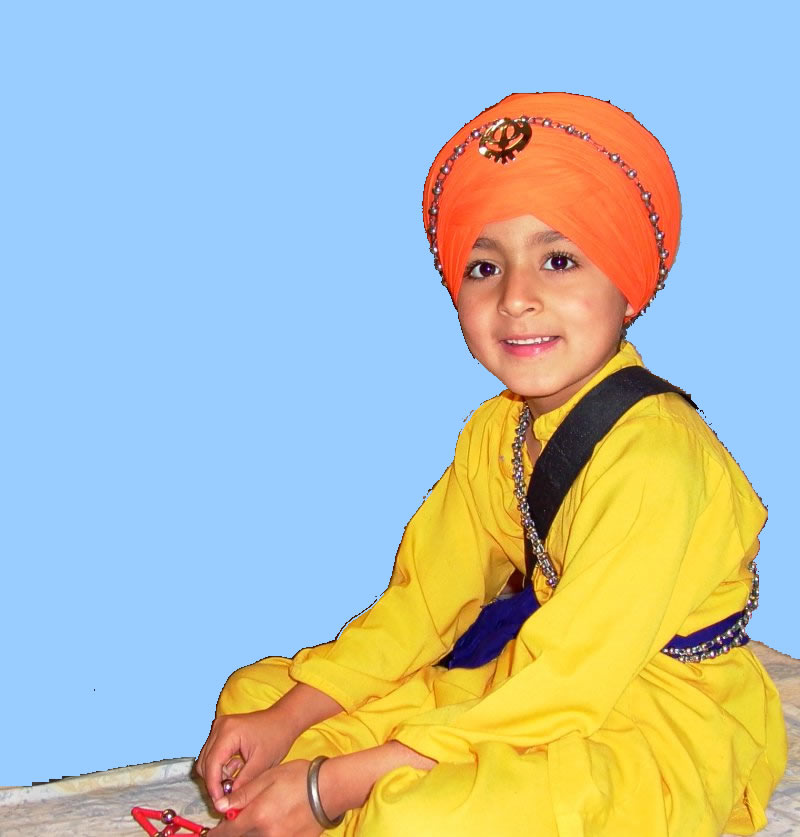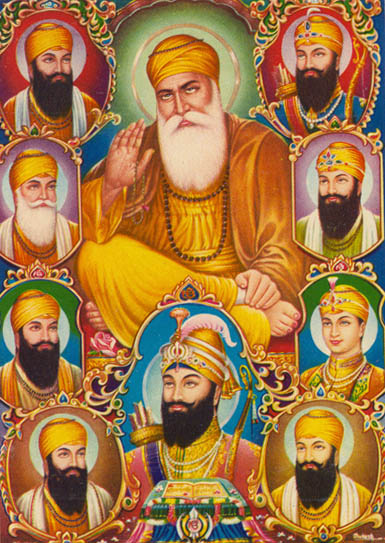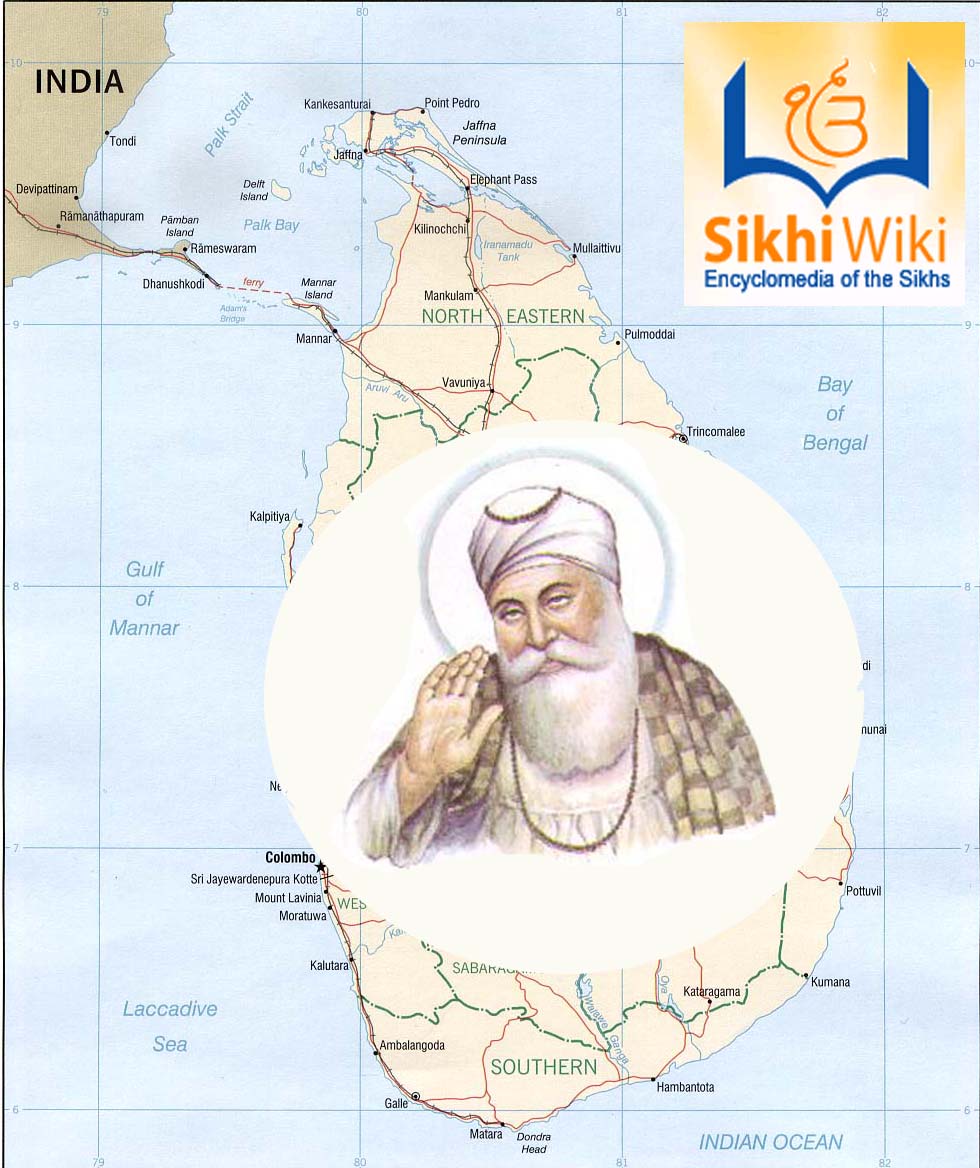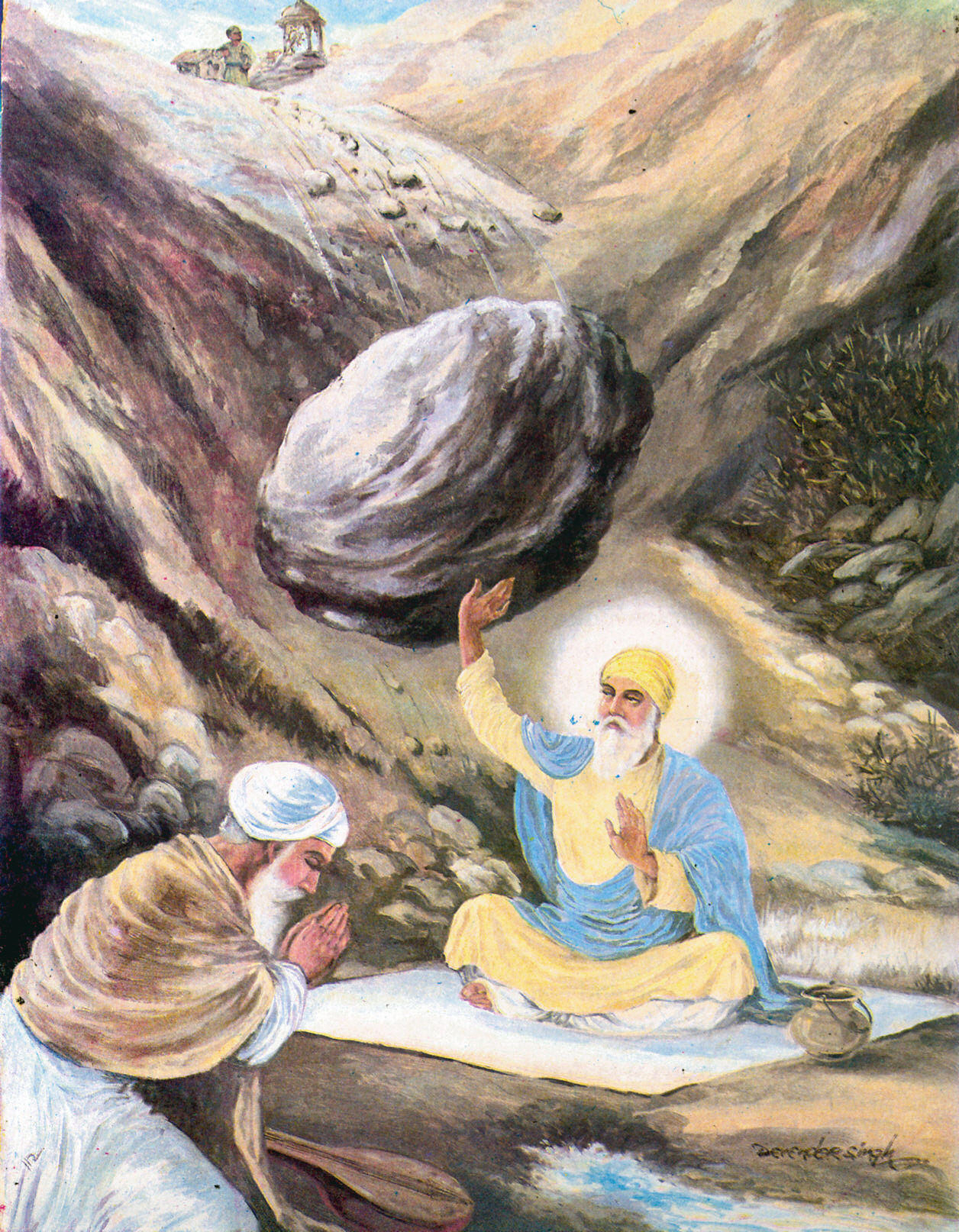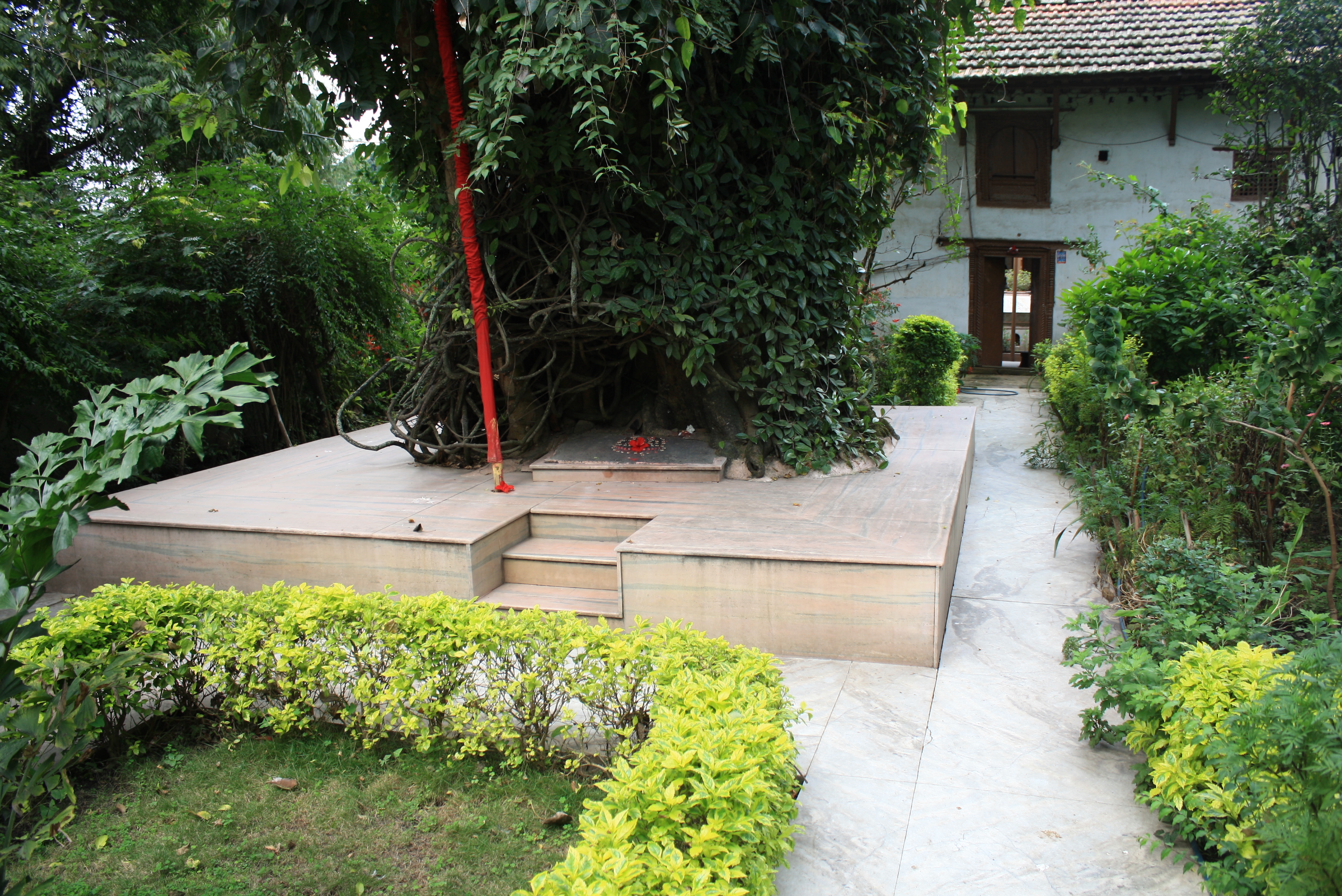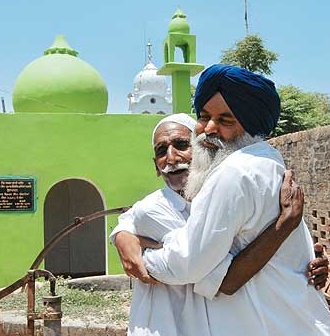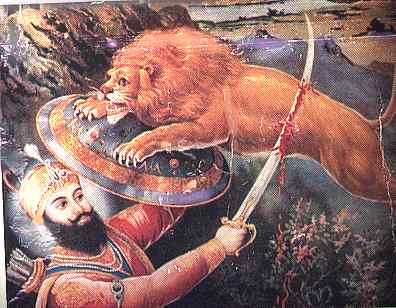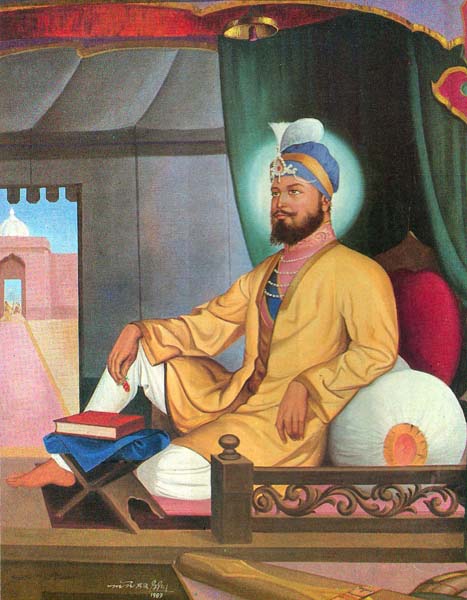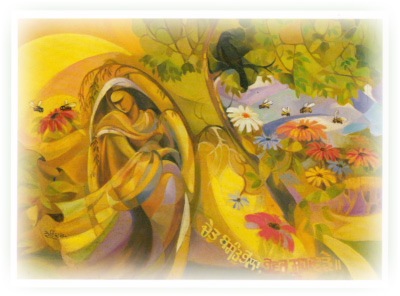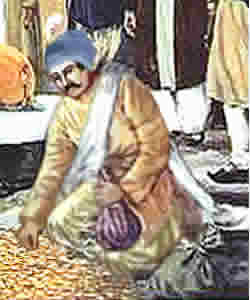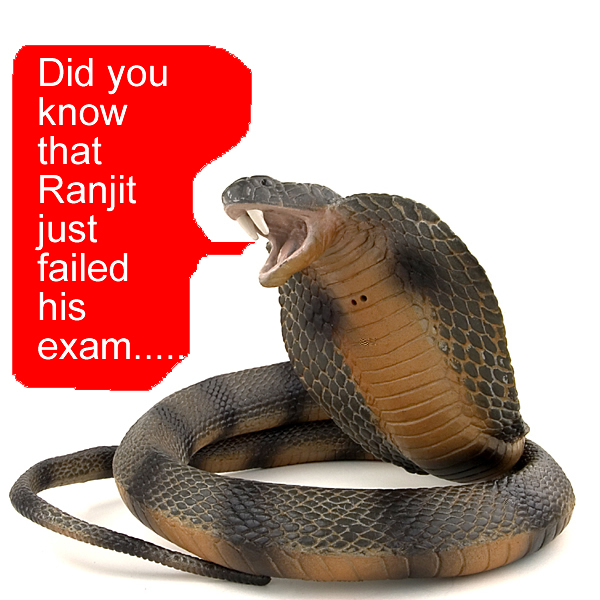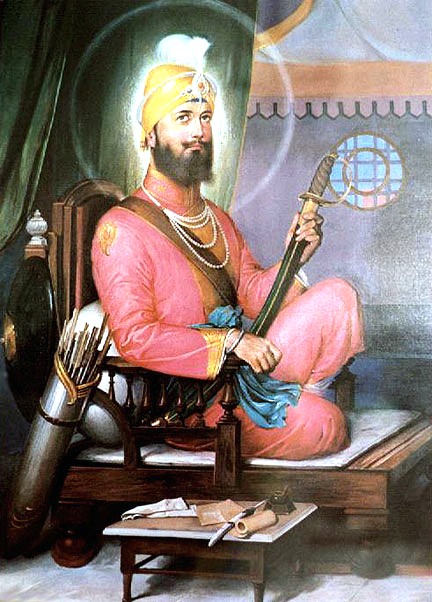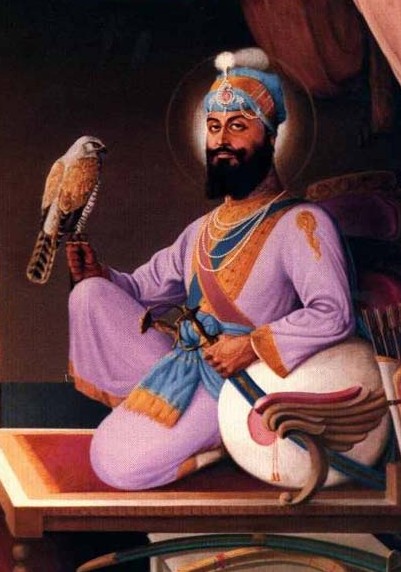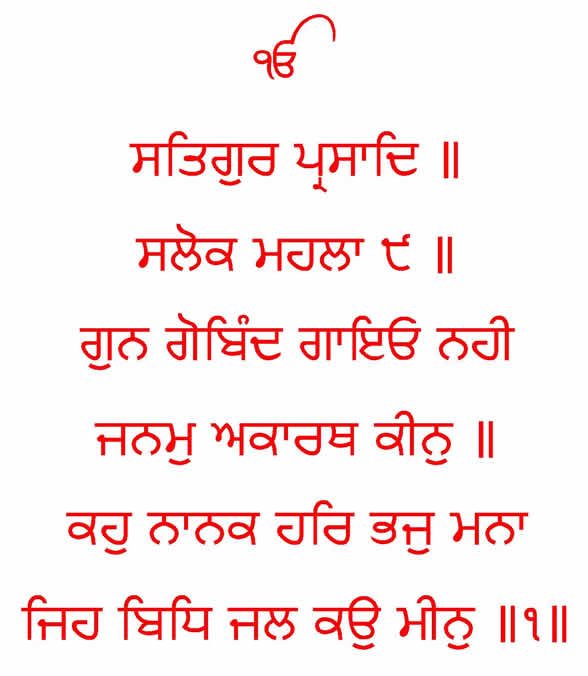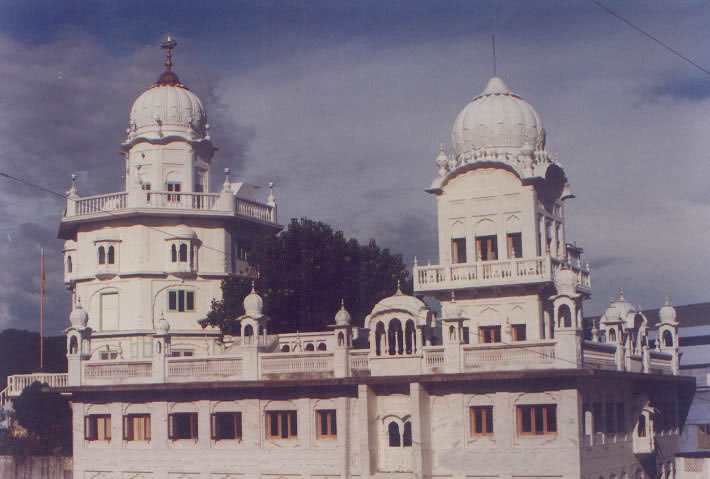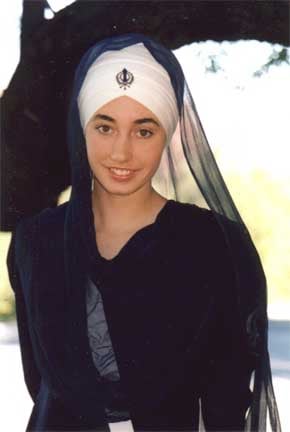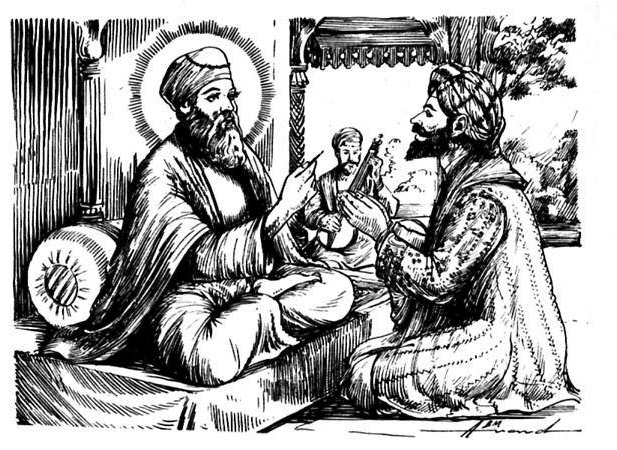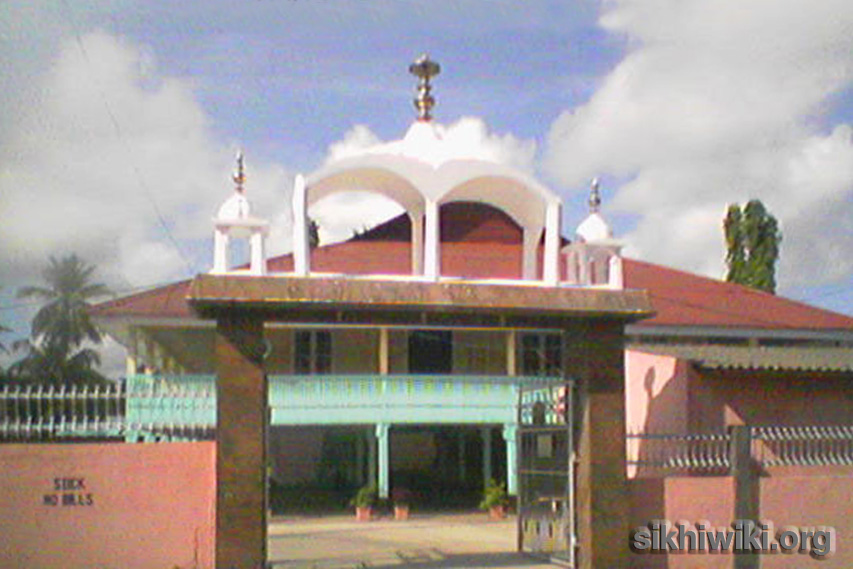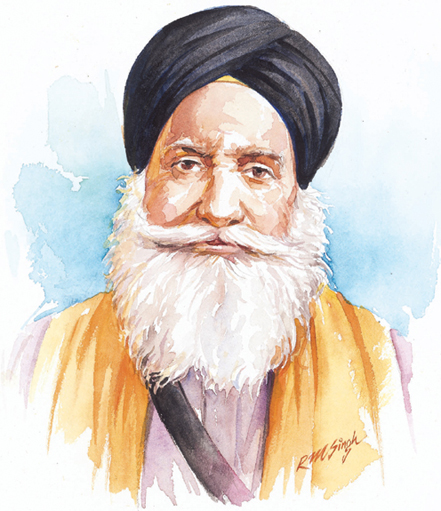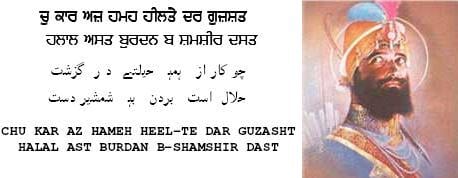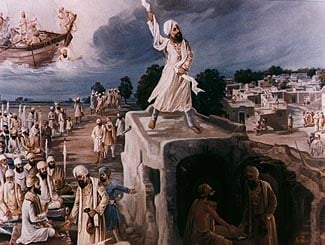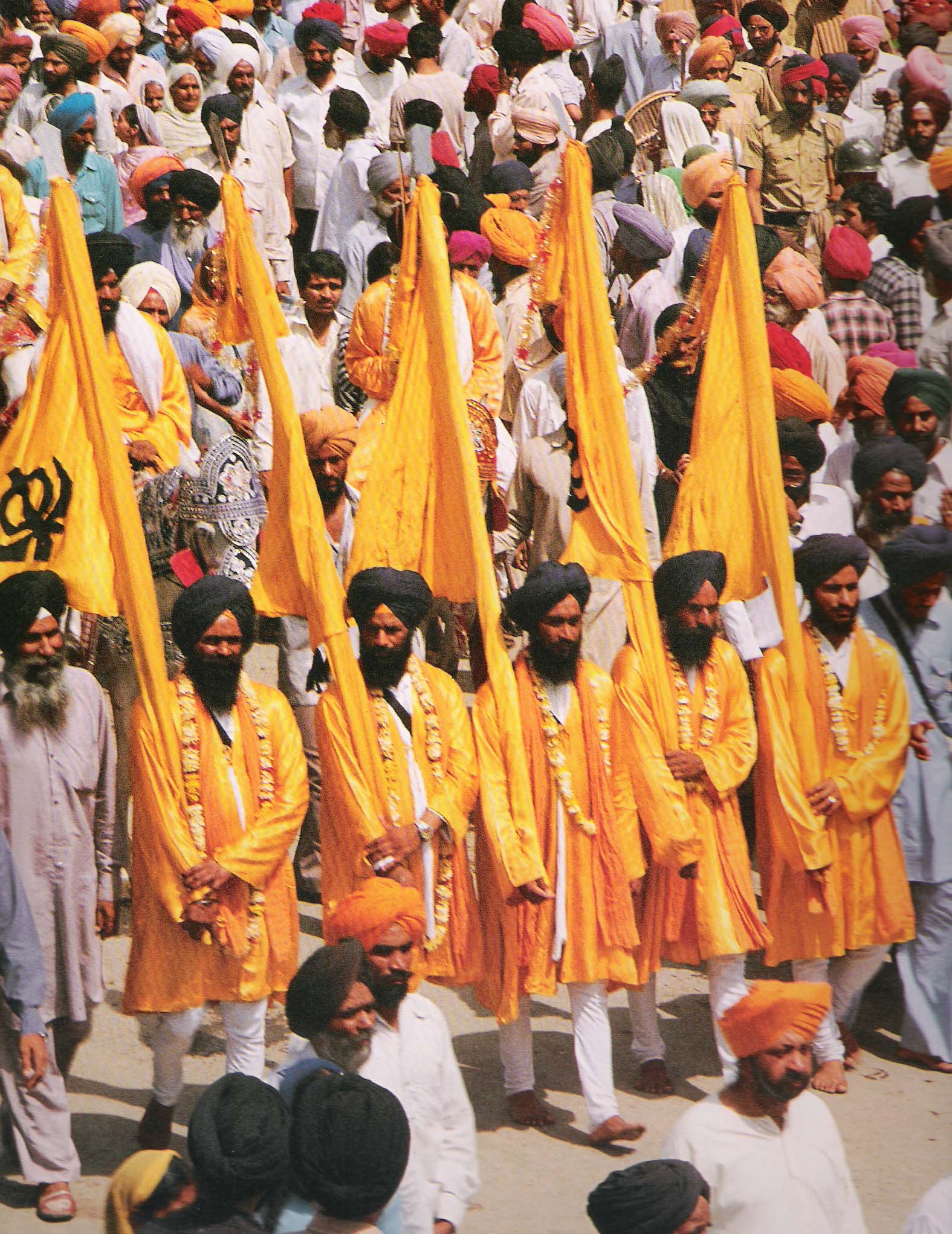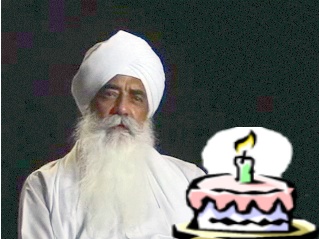SikhiWiki:Today's featured article/March 2009
Today's featured article archive
2007 -
2008 -
2009 -
2010 -
January - February - March - April - May - June - July - August - September - October - November - December
Today is Monday, November 3, 2025; it is now 14:56 UTC
Featured content:
| << | Today's featured articles for March 2009 | >> | ||||
| Su | Mo | Tu | We | Th | Fr | Sa |
| 1 | 2 | 3 | 4 | 5 | 6 | 7 |
| 8 | 9 | 10 | 11 | 12 | 13 | 14 |
| 15 | 16 | 17 | 18 | 19 | 20 | 21 |
| 22 | 23 | 24 | 25 | 26 | 27 | 28 |
| 29 | 30 | 31 | ||||
- March 1
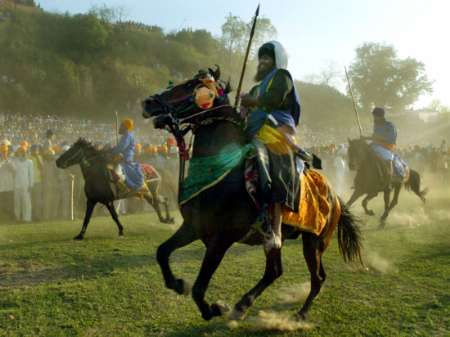
(Photo:Reuters/Kamal Kishore)
Hola Mohalla or simply "Hola" is a Sikh festival that takes place on the first "full moon" day in the month of March which approximately corresponds to the Punjabi month of Chet which begins on March 14.
Chet is the first month in the Nanakshahi calendar and this month coincides with March-April in the Western calendar.
Every year this festival takes place in the month of March when we have a "full moon" in India. This Sikh festival follows the Hindu festival of Holi; The word "Mohalla" is derived from the Arabic root "hal" (alighting, descending) and is a Punjabi word that implies an organized procession in the form of an army column.
But unlike Holi, when people playfully sprinkle color, dry or mixed in water, on each other, the Guru made Hola Mohalla an occasion for the Sikhs to demonstrate their martial skills in simulated battles.
Together the words "Hola Mohalla" stands for "mock fight". During this festival, procession are organised in the form of army type columns accompanied by war-drums and standard-bearers and proceeding to a given spot or moving within the state from one gurdwara to another. .....More
view – talk – edit – history
- March 2
The following is a brief summary of the conduct expected from a Sikh of the Guru. Full instructions for the Sikh are given in the Sri Guru Granth Sahib which is more than a holy book for the Sikhs - It is their "Living Guru". By reading the Guru Granth Sahib, the Sikh can learn about the Sikh beliefs and the type of conduct expected from a Sikh.
An online text with English translation of the Sri Guru Granth Sahib can be found here.
Instructions
- 1. There is only one God; worship and pray only to Him (Simran).
- 2. Always remember the one God (Naam Japo), work hard and honestly (Kirat Karni), and share with others (Wand kay Shako).
- 3. At all times practice Truth, live a Truthful life and engage in service (Sewa) for the community.
- 4. Remember that women are as good as men and must be treated as equals.
- 5. Always remember the whole of the human race is one. Distinctions on caste, colour and class are wrong and against Sikh principles. .....More
- March 3
Sikhism was founded in the early fifteenth century by their founder and spiritual teacher called Guru Nanak. He was firmly of the belief that all people were born equal and should have equal opportunities.
Guru means "spiritual leader" and he guided his people in the way of God's will or Hukam believing there was only one universal God and that we were all accountable to Him. There are over 25 million Sikhs worldwide and the religion is open to anyone.
Guru Nanak was born in the village of Talwandi, now called Nankana Sahib, near Lahore in present-day Pakistan. His parents were of Hindu background and he was from a family who were traders.
Even as a boy, Nanak was fascinated by religion, and his desire to explore the mysteries of life eventually led him to leave home and he travelled all over the world in the manner of Indian saints. It was during this period that Nanak met many religious people and preached his message of one God to all the people of Central Asia. He made five distinct major journeys, which are called Udasis spanning many thousands of miles covering most of Central Asia and the Middle-East. .....More
view – talk – edit – history
- March 4
Guru Nanak, the founder of the Sikh religion, like the Buddha earlier, sowed the seeds of spiritual democracy.
The process of its germination and growth is still in progress and continues to flourish due to the Guru's message for the world at large, conveyed through his writings and personal visits to the then known countries of the Asian sub-continent.
This article examine the historical facts relating to Guru Nanak's visit to Sri Lanka. The Guru, possessing neither territory, nor wealth, nor aided by the forces of arms, preached his doctrine of peace in the countries during the course of his travels including Sri Lanka.
It is clear from recent research to conclude that much evidence, in both written and oral traditions, is available with regard to Guru Nanak's travels, beyond the limits of Hindustan (India), including Sri Lanka, then known as Simhal Dweepa, to spread his message of virtues and righteousness.
Matiakullam, a town in Sri Lanka, visited by Guru Nanak sahib and Bhai Mardana; at the time of the visit of the Guru, present-day Baticulla was known as Matiakullam. Raja Shiv Nabh ruled this area. .....More
view – talk – edit – history
- March 5
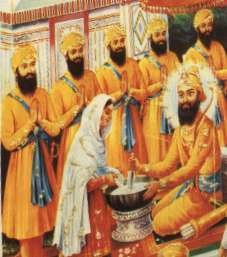
Every year in April, the whole of Punjab in northern India had been celebrating the New year on Vaisakhi day with great fanfare and wild fairs and festivities.
This was the main Sikh festivals and traditionally it was the end of the wheat harvest. But in 1699, this festival became extra special because it was chosen by Guru Gobind Singh as the day to start the Khalsa fellowship.
On April 13th in most Sikh Gurdwaras a special ceremony takes place as a reminder of this special first Amrit Ceremony.
This first Amrit Ceremony took place in India on April 13, 1699 when Guru Gobind Singh asked a gathering of Sikhs who was prepared to die for God or Waheguru. At first there was a hesitation then one man stepped forward...The Guru and he went together into the tent. Then, Guru Gobind Singh reappeared on his own with blood dripping from his sword. He asked again, and again, again and again. Four brave Sikhs answered the Guru's call for a head. The Guru took the fifth man into the tent and then there was a delay. .....More
view – talk – edit – history
- March 6
After travelling through Arabia and many other countries, in 1521 A.D during the summer season, Guru Nanak reached a place called Hasan Abdal.
This place is about fifty kilometres from Rawalpindi in Pakistan to the west side of the mountains. This is hilly area and some places here have natural fountains which flow from the ground.
Guru ji with Bhai Mardana and a small party halted at this place at the foot of a hill. Under a shady cool tree, Guru Nanak and Bhai Mardana started reciting Kirtan as was their normal practise. Slowly, the local devotees began to gather around the Guru.
Soon, a large crowd of people began regularly to gather around the Guru. He talked to them about God and the true path of the holy. He told them about the greatness of God and His creations. More and more people began to gather around him every day.
On the top of the nearby hill, there lived a Muslim pir (priest). His name was Bawa Wali Qandhari. Wali Qandhari had established a celebrated dera (holy place) at this hill at Hasan Abdal, near a natural fountain. .....More
view – talk – edit – history
- March 7
Under a large papal tree, the priest pointed out a stone slab on which were carved two feet, laid with roses. “The Guru’s,” he said.
“It is at this spot that Guru Nanak sat in meditation. In that little shrine behind you, are buried the ashes of a Nepali king.”
We sat together on mossy steps leading up to the shrine, a strong scent of jasmine in the air and two bulbuls (passerine songbirds) pecking about the carved feet. And there he told me the story of the temple of the golden book and the shrine against which we sat.
It seems a Malla king of the early sixteenth century – the priest did not know his name – suffered a disturbed mind. His brothers, alarmed by his behaviour, banished him to India. Roaming forlornly through the holy city of Benaras he came upon the saint Guru Nanak and begged him to cure his affliction. After many visits and much beseeching, the guru advised the king to return to his kingdom where his health would be restored.
Miraculously, the saint preceded the king to Kathmandu for there he was, meditating under a papal tree on a hill beside the river. .....More
view – talk – edit – history
- March 8
Wine, alcohol, recreational drugs (such as marijuana, heroin, cocaine, ecstasy, LSD, PCP) and other intoxicants (such as inhalants, gases, aerosols, or solvents, glue, etc) used with the intention of creating or enhancing recreational or religious experience are condemned by the Sikh Gurus.
Such users of drugs are wasting their lives on the planet by living in an illusionary state. The Guru supports the person who stays alert and aware, keeping themselves away from all types of intoxicants.
Gurbani states in the Guru Granth Sahib that "Those who do not use intoxicants are true; they dwell in the Court of the Lord.(1)" (SGGS p 15)
Drugs commonly considered capable of recreational use include alcohol and tobacco, and drugs within the scope of the United Nations Single Convention on Narcotic Drugs and Convention on Psychotropic Substances.
Psychopharmacologist Ronald K. Siegel refers to intoxication as the "fourth drive", arguing that the human instinct to seek mind-altering substances (psychoactive drugs) has so much force and persistence that it functions like the human desire to satisfy hunger, thirst and the need for shelter. .....More
view – talk – edit – history
- March 9
In this era of Kaljug, it may surprise many people and communities when Sikhs help build mosques for Muslims or temples for Hindus but this is a trait that has been endowed to Sikhs since the times of the Sikh Gurus many centuries ago.
The reaction of non-Sikhs to such deeds is surprising to many faithfully Sikhs.
A proud Sikh family of Sarwarpur, near Ludhiana, cannot understand what the fuss is about. Ever since Sajjan Singh Ghuman, an NRI Sikh living in England, rebuilt a mosque in his native village that was damaged during Partition, the shrine, as well as his family back home, have attracted the curiosity of outsiders.
"We never imagined we would be on a Punjabi TV channel just because my elder brother rebuilt this small mosque for the poor Muslim families of our village".
"For him, it was just a gesture towards restoring the collective heritage of our village,” says Sajjan’s brother, Joga Singh, who manages the family’s lands in Sarwarpur. Sure.
But what Joga and his family, or even the TV channel, do not know is that the sentiment that inspired his brother’s act is being manifested in scores of villages across Punjab .....More
view – talk – edit – history
- March 10
Gurdwara Sher Shikar, (Gurdwara of the Tiger Hunt) is situated in Machkund, in Dhaulpur, Rajasthan, northern India. This Gurdwara is connected to the sixth Guru, Shri Guru Hargobind's visit to the area and his part in the fabled hunt.
While travelling towards Gwalior with Emperor Jahangir, Guru Hargobind arrived at Machkund on 4th March, 1612 and stayed in Bhamtipura village. The head of that area informed Jahangir of a deadly lion stalking the local villagers and asked the Emperor to save them from the lion. (The story is told by some with a Tiger and by others with a Lion. 'Shere' can be taken for either animal in Persian or Panjabi.)
It is said that Jahangir had quickly thought to use the lion hunt as an opportunity to bring about Guru Hargobind's death. However, history records that a very different result took place as a result of this fabled hunt. While the Emperor's hunting party was in the forest searching for the lion, the lion suddenly charged from nowhere in the direction of Jahangir. Jahangir and his soldiers quickly fired their guns and arrows missing the great beast. .....More
view – talk – edit – history
- March 11
For a true Sikh who walks on the path of Dharam (righteousness), it is not permitted to wander around begging from others; the Guru tells us: "Those who walk in the Will of the True Guru, never wander begging (2)" (SGGS p 729).
The only begging should be from the Almighty Lord; Gurbani confirms, "Beg from the One Lord, the Great Giver, and you shall obtain your heart's desires. But if you beg from another, then you shall be shamed and destroyed" (SGGS p 590).
So never go asking for donations from anyone; ask and do ardas to the Almighty and if He desires, your needs in this respect will be fulfilled; if not, then don't waste your times begging elsewhere; live in His hukam; make every effort to do good but only have ultimate faith in the One Lord!
Further, if any wandering ascetic or recluse goes around begging, the Guru tells us not "to touch his or her feet" ie: do not entertain them as spiritual teachers. The Guru tells us clearly, "One who calls himself a guru or a spiritual teacher, while he goes around begging - don't ever touch his feet" (SGGS p 1245). .....More
view – talk – edit – history
- March 12
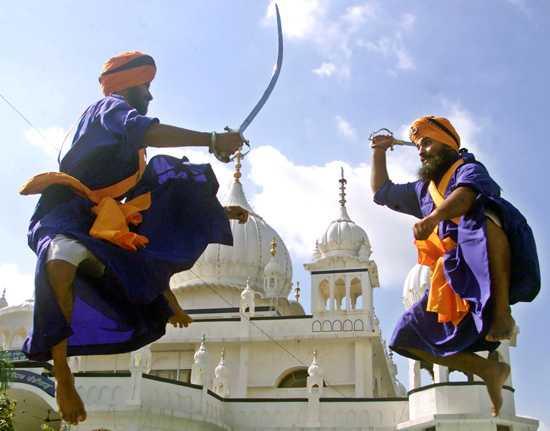
Gatka is an ancient martial art which has been thoroughly battle-tested and has existed in northern India for many thousands of years.
Although it uses the sword or (kirpan) as its primary weapon, many other weapons are available to the Gatka master.
Today, this art exists exclusively amongst the Sikhs who have passed down the flamboyant techniques through generations, since their sixth Guru, Guru Hargobind wore the two swords of Miri (temporal, worldly) and Piri (spiritual, transcendental).
The Sikhs have been responsible for the revival of this early art ensuring it's survival despite mass persecution of the native population in India by foreign invaders like the Mughals and others for many hundreds of years.
Gatka is a complete martial system which uses spiritual, mental and physical skills in equal portions to help one become fully competent in defending themselves and others. It is a system that can only be used as a last resort: "When all other means have failed, it is proper to take the sword in one’s hand" (Guru Gobind Singh) .....More
view – talk – edit – history
- March 13
On March 14, which is also the Nanakshahi New Year and the first day of the month of Chet, the Sikh community worldwide celebrate the Gur Gaddi (Guruship) of the seventh Sikh Guru, Guru Har Rai.
Guru ji was the son of Baba Gurdita ji and Mata Nihal Kaur ji. Baba Gurdita was son of the sixth Guru, Guru Hargobind. Although, Guru Har Rai Ji was a man of peace, he never disbanded the armed Sikh warriors (Saint Soldiers), who earlier were maintained by his grandfather, Guru Hargobind.
He always boosted the military spirit of the Sikhs, but he never himself indulged in any direct political and armed controversy with the contemporary Mughal Empire. Once on the request of Dara Shikoh (the eldest son of emperor Shah Jahan), Guru Sahib helped him to escape safely from the bloody hands of Aurangzeb's armed forces during the war of succession.
Guru Sahib also established an Aurvedic herbal medicine hospital and a medical research centre at Kiratpur Sahib. There also he maintained a zoo. Once Dara Shikoh, the eldest son of Shah Jahan fell seriously ill by some unknown disease. The best physicians available in the country and abroad were consulted, but there was no improvement. .....More
view – talk – edit – history
- March 14
Chet - Happy New Year
Chet is a first month in the Nanakshahi calendar, which governs the activities within Sikhism. The month starts on March 14 which also marks the beginning of the Nanakshahi New Year.
The month of Chet ends on April 13. This month coincides with March - April of the Western/Georgian/Julian Calendar and is 31 days long. Also on March 14 every year, the Sikhs celebrate the Gur gadi (Guruship) of their seventh master, Guru Har Rai.
On April 14 starts the second month of the Sikh calendar called Vaisakh. During Chet the season in Punjab, the land of the Sikh Gurus is spring and the climate is moderate with good sunshine during the day. The winter cold has truly been completely uplifted. Many tourists from western countries visit north India during Chet to join in the festivities of the New year and Holla Mahalla.
The Guru tells us that in the month of Chet (March/April): ".... by meditating on the Lord of the Universe, a deep and profound joy arises. Meeting with the humble Saints, the Lord is found, as we chant His Name with our tongues. Those who have found God-blessed is their coming into this world. Those who live without Him, for even an instant-their lives are rendered useless. The Lord is totally pervading the water, the land, and all space. He is contained in the forests as well. Those who do not remember God-how much pain must they suffer! Those who dwell upon their God have great good fortune. My mind yearns for the Blessed Vision of the Lord's Darshan. O Nanak, my mind is so thirsty! I touch the feet of one who unites me with God in the month of Chayt.||2||" (SGGS page 133) .....More
view – talk – edit – history
- March 15
Diwan Todar Mall was a wealthy merchant of Sirhind, who on the 13 December 1705 performed the cremation of the three martyred bodies of the family members of the tenth Sikh Guru.
These included the two younger sons of Guru Gobind Singh, Zorawar Singh aged about 6, Fateh Singh aged about 9 and their grandmother, Mata Gujari - the mother of the tenth Guru.
This incident occurred after the Sahibzade had been executed by the Mughal authorities on the 12 December 1705 for not renouncing their faith.
Subsequently, their grandmother died from shock at the news of the sudden and despicable execution of the innocent youngsters. To get the release of the three bodies of the Guru's household, this wealthy merchant had to cover the required ground for cremation with gold coins.
The compassionate Sikh trader of Sirhind, according to tradition, performed the last rites for the two younger sons of Guru Gobind Singh martyred on the orders of Wazir Khan, faujdar of Sirhind, and of Mata Gujari, the Guru's mother. It is said that landowners around the Sirhind Fort would not permit him to hold the cremation in their fields, until one Chaudhari Atta agreed to sell him a plot. .....More
view – talk – edit – history
- March 16
Ninda ( ਨਿੰਦਾ ) or Nindeya are words in Punjabi which mean to slander, slur, backbite or smear and are words used to describe a defamatory or negative statement made about someone.
The derogatory account is usually made when the person about whom the venom is being spat is not present or is not within ear-shot of the conversation.
This type of harmful speech (called "Nindeya") is usually carried out to cause harm to the other person, to ruin the other person's reputation or generally to denigrate the other person's status. The main reason and motivation for slandering is that it gives the maker of the slander "satisfaction" as it makes them feel important and they feel they are "better" and more "righteous" than the person being slandered. The Sikh Gurus condemn this action and write against this ugly habit.
"ਪਰ ਨਿੰਦਾ ਕਰੇ ਅੰਤਰਿ ਮਲੁ ਲਾਏ ॥ ਬਾਹਰਿ ਮਲੁ ਧੋਵੈ ਮਨ ਕੀ ਜੂਠਿ ਨ ਜਾਏ ॥" " Par ninḏā kare anṯar mal lā▫e. Bāhar mal ḏẖovai man kī jūṯẖ na jā▫e." "He slanders others, and pollutes himself with his own filth. Outwardly, he washes off the filth, but the impurity of his mind does not go away." (SGGS p 88) .....More
view – talk – edit – history
- March 17
Damdami Taksaal
The Damdami Taksaal is the travelling Sikh university, which was founded by Guru Gobind Singh, the tenth Sikh Guru in about 1705 to impart knowledge of Gurmat onto all the people of the world.
It has had an unbroken lineage of Jathedars (leaders) who have led the Taksal throughout Sikh history from the time of the tenth Patshah (king).
The first and foremost function of the Taksal is to educate Sikhs, to teach them the correct pronunciations of Gurbani, to do Katha and Kirtan. This is done by getting students to undergo rigorous studies, Simran (meditation) and seva (selfless service), thus a wholesome Sikh lifestyle is developed and maintained.
The Taksal has always been a key strategic player in the activities of the Sikh Nation, with Baba Deep Singh & Baba Gurbaksh Singh (respectively 1st & 2nd Jathedars) both being martyred defending the sanctity of Sri Harimander Sahib, Amritsar, they were both beheaded yet still fought on until the Mughals had to run in fear.
The sixth Jatheder, Giani Bhai Sant Singh was the Head Granthi of Sri Harimander Sahib and a close aid of Maharaja Ranjit Singh. The famous Sikh Historian Bhai Santokh Singh (author of Suraj Parkash) was also a student of the Giani Bhai Sant Singh Jee. .....More
view – talk – edit – history
- March 18
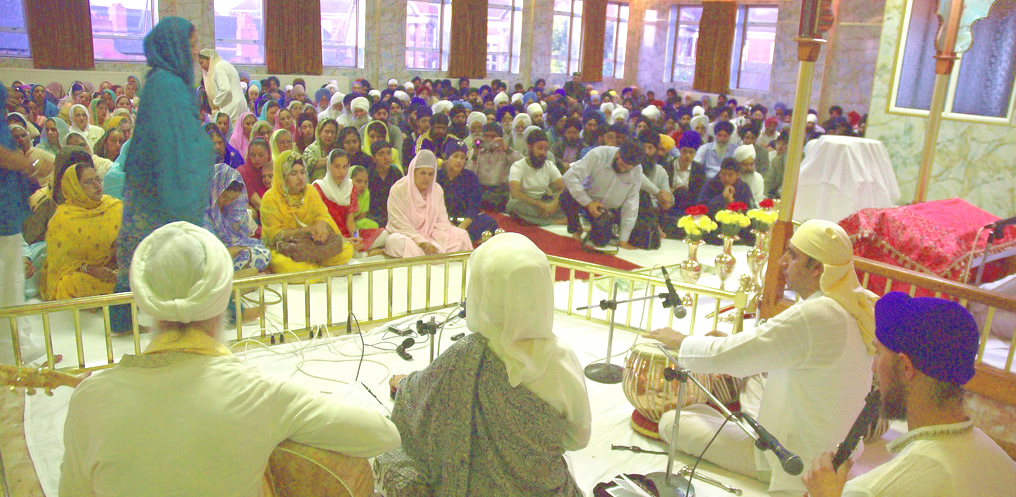
"Sangat" is congregation. "Sadh" is saint. "Sat" is true.
All these three words refer to a gathering of, or a meeting with, God-oriented people. The group may come together to say prayers to God, sing kirtan, listen to kathas or discuss spirituality and religious matters. They may meet in a Gurdwara, the Sikh place of worship, or at home, or anywhere else.
Most commonly, a sangat gather in the presence of the Guru Granth Sahib - the Sikh holy book. Wherever people gather to sing the praise of the Lord, or to talk about Him, they are referred to as "Sat Sangat" or "Sadh Sangat" – "holy gathering". While the word Sangat can refer to any gathering, but within the field of a religious faith, it refers to a true, wise or holy gathering.
Man is known by the company (or sangat) that he keeps. Man is the result of his environment. Bhagat Kabir says: "ਜੋ ਜੈਸੀ ਸੰਗਤਿ ਮਿਲੈ ਸੋ ਤੈਸੋ ਫਲੁ ਖਾਇ ॥ Jo jaisī sangaṯ milai so ṯaiso fal kẖā▫e. According to the company one keeps, so are the fruits that one eats" (SGGS p 1369).
So the company that one keeps is a great force and it plays a big role in shaping the person. Those who live in the company of thieves, robbers and evil persons, acquire evil ways of life and are bound to become thieves, robbers and the like, but those who keep the company of saintly people are shaped in the saintly mould and destined to follow the path of spirituality. .....More
view – talk – edit – history
- March 19
On 19 March every year, the Sikhs commemorate the passing away of their sixth Master, Guru Har Gobind (5 July 1595 - 19 March 1644).
The Guru Sahib was born at village Guru Ki Wadali in district Amritsar on 5 July 1595 and was the only son of Mata Ganga and Guru Arjan, whom he succeeded on 11 June 1606 at the age of only 11 years old.
The young Hargobind received his early education and training from the revered Sikhs leaders of the time Baba Buddha, the first granthi and Bhai Gurdas, the scribe of the Sikh holy script, Guru Granth Sahib.
Guru Hargobind was married in about 1610 to Mata Nanaki also known as Mata Marwahi or Mata Mahadevi. They were endowed with a large family consisting of one daughter Bibi Viro and five sons: Baba Gurditta, Suraj Mal ji, Ani Rai ji, Atal Rai ji and Tegh Bahadar ji.
Guru Hargobind was responsible for wearing two kirpans - one for Miri (temporal protection) and one for Piri (spiritual reasons) and began the rapid and irreversible militarization of the Sikh people. It was due to the tragic martyrdom of his father, Guru Arjan that the sixth Guru changed the Panth into an effective, brave and determined army of religious supporters. .....More
view – talk – edit – history
- March 20
Salok Mahala 9 are the saloks (type of Gurbani composition) by the ninth Sikh Guru, Guru Tegh Bahadur which form the concluding portion of the Guru Granth Sahib.
They precede Guru Arjan's Mundavani and appear from page 1426 to 1429 of the Sikh holy Granth. This composition consists of 57 (fifty seven) saloks and spans just 4 pages of the holy Granth.
Each salok is a couplet consisting of 2 lines. This Bani was incorporated into the Guru Granth Sahib by Guru Gobind Singh, the last human Guru of the Sikhs. As is commonly believed, they were composed by Guru Teg Bahadur while in the 'Kotwali' (prison) at Chandni Chowk, Delhi, before he achieved martyrdom.
These saloks form an important part of the epilogue when bringing to a close the reading of the Guru Granth Sahib (Bhog) on a religious or social occasion and should thus be the most familiar fragment of it, after the Japji Sahib, the Sikhs' morning prayer.
Salok, in Sanskrit, signifies a verse of laudation or praise. In Hindi and Punjabi, it has come to imply a couplet with a moral or devotional content. .....More
view – talk – edit – history
- March 21
Gurdwara Sri Guru Tegh Bahadur Sahib - This famous Gurudwara is situated in the heart of the Dhubri Town on the bank of the mighty Brahmaputra river in far north-west India.
Guru Nanak the first Sikh Guru visited this place in 1505 and met Srimanta Sankardeva (the founder of the Mahapuruxiya Dharma) as the Guru travelled from Dhaka to Assam.
This historic shrine, Sri Gurdwara Guru Tegh Bahadur or Damdama Sahib at Dhubri in Assam was built in memory of the visit of Guru Nanak. Hence it has great importance for Sikh community. Guru Tegh Bahadur established this Gurdwara during his 17th century visit to the area.
Sikh devotees from all over India and the world assemble in this Gurdwara every year in the month of December to mark the martyrdom of Guru Tegh Bahadur with due solemnity and ceremony. Sikh devotees call this festival Sahidee Guru Parav.
It was during his stay in Dhubri, that the ninth Guru received the news that a son was born to him at Patna. .....More
view – talk – edit – history
- March 22
Suchajee and Kuchajee are the names given by Guru Nanak to two types of "women". These names appear in the raga banis (the raga section) of the main Sikh scripture called the Guru Granth Sahib. The word "Suchajee" means a capable and skilful woman or bride while "kuchajee" is the opposite. This composition is in Raga Suhi.
In this sacred script the Guru tells the world the difference between a noble and good women and a bad and ignoble women. In these banis "woman" is a reference to the soul of all human beings not just that of a woman! These banis which start at page 762 tell us how to become noble brides of God and not to fall into the trap of worldly entanglements and waste this marriage (life).
First the Guru wrote kuchajee bani and then suchajee bani so as to tell how an ignoble soul can become a noble soul. The noble soul is always honoured in God's house. The ignoble soul and noble soul both are provided every happiness in life but the noble soul never forgets the true Lord and the ignoble soul will fall into the well of attachment with worldly things. .....More
view – talk – edit – history
- March 23
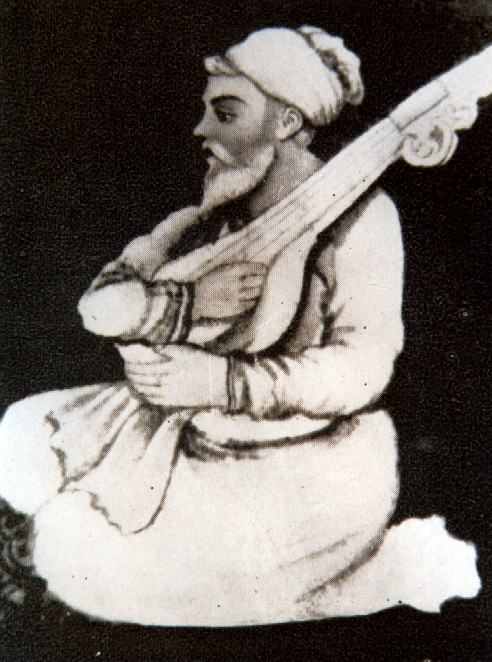
Bhai Mardana, for forty-seven years, travelled with Guru Nanak wherever the Guru went. Whether it was in the bitter cold of the hills or the heat of the deserts, he was never far away from the Guru's side.
The fear of wild animals, hunger, thirst or even the warm thoughts of a loving, comfortable home never brought the five vices - lust, anger, greed, attachment and pride to his mind for he had replaced them with the five virtues - truth, contentment, patience, humility, compassion and love. He was given the honor by the Guru of being a saint and a brother to all. The Guru also included his Bani (verses) in the Sri Guru Granth Sahib.
Mardana who was nine years older than Guru Nanak and was the son of a "mirasi" Muslim. The Mirasis were men who earned their living by entertaining others. They were known as "Bhand" (bards) or "Naqqal" (actors or jesters); they were the great story tellers of Punjab. Often very poor, some were lucky enough to find jobs in the darbars of the feudal rulers and provisional leaders to supplement their incomes.
In the days before established postal services, they often did odd jobs in the villages of Punjab. .....More
view – talk – edit – history
- March 24
Guru Nanak and Bhai Mardana continued to travel to many different parts of the world. One day, they arrived at a beautiful location near Lahore, which is a historic city in present-day Pakistan.
The Guru decided to setup their camp outside the city. He sat on a green, grassy spot near the river Ravi. Sitting at this tranquil spot, the Guru fixed his thoughts on God and meditated for a little while.
Bhai Mardana began singing the Guru’s sacred songs or hymns called Shabads. At times, the Guru himself would join in and begin to sing Kirtan as well.
Soon, people who heard these simple but very heart rendering melodies began to gather around the Guru and Bhai Mardana. Folks everywhere loved to hear these sacred songs. They also liked to hear the Guru’s talks about life and the importance of meditation or Simran.
One day, during such a melodious recitals, a rich man of Lahore came to the Guru. He asked the Guru to go with him to his house.
The Guru said, "I am all right here. I am not really fond of grand houses. Moreover, my visit to your house might cause you inconvenience and unnecessary trouble." .....More
view – talk – edit – history
- March 25
A Gurdwara dedicated to a Noble Man - Perhaps, this is the first and last Gurdwara, named after a person other than the Sikh Gurus.
Gurdwara Dr. Diwan Singh is a Sikh shrine located in the heart of Port Blair in the Andaman Islands. This Gurdwara was established in 1937 by Dr. Diwan Singh Kalapani a well known independence martyr. This Gurdwara is built with wood on a foundation of iron pillars. This is one of the oldest Gurdwaras in Port Blair. The Gurdwara is in the Aberdeen Bazaar and caters to the Punjabi community of the Andaman and Nicobar Islands.
The Gurdwara's foundation was laid by the local Panj Piare on 1st August 1937, at first it was refered to simply as the "New Gurdwara". The whole community of Port Blair, that's right -- not just the Sikhs!, but citizens - whether Christian, Hindu or Muslim, joined the five respected Sikhs and their Sikh brothers and sisters in the building of the Gurdwara. Practically everyone who lived in Port Blair devoted their time, energy and resources to complete this 'New Gurdwara'. Even the Military Police denoted a sum of Rs. 500/- towards the construction fund. .....More
view – talk – edit – history
- March 26
Baba Kharak Singh was born in (6 June 1868 - 6 October 1963) at Sialkot, now in Pakistan. He was a Sikh political leader and virtually the first president of the Shiromani Gurdwara Parbandhak Committee. Baba ji was from the first batch of graduates of the Punjab University, Lahore. His father, Rai Bahadur Sardar Hari Singh, was a wealthy contractor and industrialist.
Kharak Singh, having passed his matriculation examination from Mission High School and intermediate from Murray College, both at Sialkot, joined Government College, Lahore, and was among the first batch of students who graduated from the Punjab University in 1889.
He then joined Law College, Allahabad, but could not complete his course owing to the death of his father and elder brother in quick succession. He returned to Sialkot to manage the family property. He started his public life in 1912 as chairman of the reception committee of the 5th session of the Sikh Educational Conference held at Sialkot.
Three years later in 1915, as president of the 8th session of the Conference held at Tarn Taran, he surprised everyone by walking to the site of the conference breaking the custom of being carried in state on a buggy driven by six horses. .....More
view – talk – edit – history
- March 27
Zafarnama means "Declaration of Victory" and is the name given to the letter sent by the tenth Sikh Guru, Guru Gobind Singh in 1705 to the Emperor of India, Aurangzeb. The letter is written in exquisite Persian verse. In this letter, Guru Ji reminds Aurangzeb how he and his henchmen had broken their oaths taken on the holy Koran.
Despite this deception, this treacherous leader could not harm the Guru. Guru Ji states in this letter that in spite of his several sufferings, he had won a moral victory over the crafty Mughal who had broken all his vows and had resorted to underhand behaviour. Despite sending a huge army to capture or kill the Guru, the Mughal forces did not succeed in their mission.
The letter reads like a reprimand by a superior personality on a higher plane to a cruel and distorted inhuman being on a lower and pitiful plane. Guru Ji in the 111 verses of this notice rebuke Aurangzeb for his weaknesses as a human being and for excesses as a leader. Guru Ji confirms his confidence and his unflinching faith in the Almighty even after suffering extreme personal loss. .....More
view – talk – edit – history
- March 28

SikhiWiki is now available translated into 13 different languages. Thanks to Google's new automatic translation service, SikhiWiki has been able to provide this facility.
It is hoped that many millions who were unable to read about Sikhism before, will now be able to do so using this new feature.
Sikhi, an incredibly valuable addition to human knowledge and wisdom will now be available to be read by many millions who previous weren't in this position before the advent of this new technology. Now people in many foreign and distant lands will be able to know and learn about the beautiful and unique message of the Sikh Gurus.
Five of the most widely spoken languages are available by using a single click to an option in the sidebar marked "translate into" on the left sidebar of the SikhiWiki screen. Below is a full list of all the languages available through this Google service. Click on the link below to start reading in any of the languages shown:
(1) Arabic (2) Chinese (Simplified) (3) Chinese (Traditional) (4) Dutch (5) French (6) German (7) Greek (8) Italian (9) Korean (10) Japanese (11) Russian (12) Spanish (13) Portuguese .....More
view – talk – edit – history
- March 29
Makhan Shah Labana, was a merchant who used to bring valuable merchandise by sea and sell it wholesale in parts of Gujarat and Punjab in India.
During one of these sea journey's, his ship was caught up in a furious storm while he was sailing, fully loaded with trade goods northwards, up the coast of India towards the Gulf of Khambhat.
The ship was terribly damaged during the storm, with the force of lightning splitting the mainsail, the sails hanging in shreds, the ship taking on water and when it seemed like he would lose the ship, Makhan decided his time had come to remember his Guru and ask for his help.
Completely powerless, he knelt down, and said his Ardas (prayer) to God and Guru Nanak for safety. "Baba jee", he prayed desperately, "Please save my ship and my men... I pledge the 500 gold mohars tied to the belt at my waist, which without your help will soon be at the bottom of the sea.
Please accept this as my humble offering." He then recited the following Shabad of Guru Arjan Dev: "ਅਪੁਨੇ ਸੇਵਕ ਕੀ ਆਪੇ ਰਾਖੈ ਆਪੇ ਨਾਮੁ ਜਪਾਵੈ ॥ ...He Himself preserves His servants; He causes them to chant His Name. Wherever the business and affairs of His servants are, there the Lord hurries to be. (1)"
Miraculously the wind started to die down, and the wild sea became calm. .....More
view – talk – edit – history
- March 30
Panj Piare (literally means the "five beloved ones") and is the name given to the five Sikhs, Bhai Daya Singh, Bhai Dharam Singh, Bhai Himmat Singh, Bhai Mukham Singh and Bhai Sahib Singh, who were so designated by Guru Gobind Singh at the historic divan at Anandpur Sahib on 30 March 1699 (now celebrated on April 14).
They formed the nucleus of the Khalsa as the first batch to receive at the Guru's hands khanda di Pahul, i.e. rites of the two-edged sword. Today, the term is used to refer to the five who perform this same rites of baptism for the Khalsa panth.
In Sikh theology, as in the Indian classical tradition generally, panj or panch, the numeral five, has a special significance. Guru Nanak in Japji refers to five khands, i.e. stages or steps in spiritual development, and calls a spiritually awakened person a panch. The ancient Indian socio-political institution "panchayat" meant a council of five elders. Something like an inner council of five existed even in the time of the earlier Gurus: five Sikhs accompanied Guru Arjan on his last journey to Lahore; the five were each given 100 armed Sikhs to command by his successor, Guru Hargobind; Guru Tegh Bahadur, set out on his journey to Delhi to court execution attended by five Sikhs. .....More
view – talk – edit – history
- March 31
Bhai Sahib Bhai Mohinder Singh was born on 31 March 1939 and is the mukhi-Sewadar (the main volunteer) of the Sikh organisation called Guru Nanak Nishkam Sewak Jatha, which has its head office in Birmingham, UK.
He has been linked to this organisation since 1974 when he met the founder and spiritual inspiration of the organisation, Sant Baba Puran Singh ji, Kericho-wala in Kenya.
Bhai sahib spent most of his childhood in East Africa; with most of his secondary education in Nairobi, Kenya. At an early age, Bhai sahib's mother passed away. Bhai sahib has such fond memory of his mother and the difficult time surrounding the sudden death of his mother.
Bhai sahib's father re-married and a stable family environment was re-established; he excelled in his studies going to the top schools in Nairobi; further university education was undertaken in the UK.
It was in 1995 that Bhai Sahib was called to take on the responsibilities of this Jatha (organisation) when Bhai Norang Singh passed away. His first main task was to successfully complete the UK sangat's project of re-gilding the Sri Harimandir Sahib. Since those times, with Bhai sahib's energy and dedication and Waheguru's kirpa, the global Sikh Sangat and Jatha together have completed many important projects for the Sikh Panth (Sikh Global Society). .....More
view – talk – edit – history
